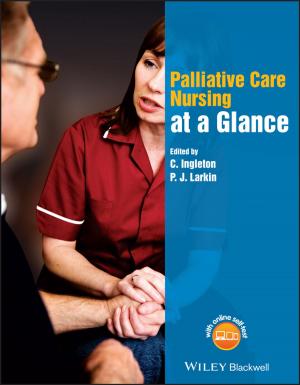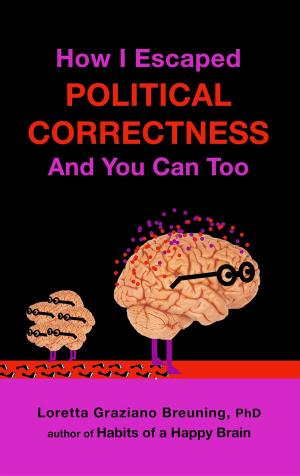Primary Mother Care and Population
Nonfiction, Health & Well Being, Medical, Nursing, Home & Community Care| Author: | Maurice King | ISBN: | 9789966724953 |
| Publisher: | Maurice King | Publication: | October 1, 2015 |
| Imprint: | Language: | English |
| Author: | Maurice King |
| ISBN: | 9789966724953 |
| Publisher: | Maurice King |
| Publication: | October 1, 2015 |
| Imprint: | |
| Language: | English |
This book has 400 pages 400,000 words and more than 700 illustrations. It tells you how to deliver a mother at home, or in a health centre. Although it is mainly written for assistant midwives, it will be useful all kinds of medical reader, including especially medical students, and indeed for the general public, since all the technical words are carefully explained.
As the preface says the authors are concerned with the ever widening gap between: (1) 'High-tech hospital obstetrics, with its increasing reliance on laboratory methods, foetal monitoring, and high rates of Caesarian section. And (2) the needs in the districts for the practical management of obstetric problems. Instead of transferring the difficult hospital methods into primary care, it tries to spread modern 'low-tech' skills as widely as it can, and to adapt them to the difficult conditions under which you work. The authors imagine that most of you are in an isolated unit, and are unable to refer your patients to hospital. If you are lucky, you will enjoy good facilities, but more often you will have to make do with almost none
Not only does it deal with delivery, and with care after delivery it also discusses antenatal care and family planning, both those methods which are used before conception, and those which need to be used afterwards.
Chapter 2 "How many children?" is especially important, since it is concerned with the problem of 'too many people for the land to support and nowhere to go'. This is called ‘demographic entrapment’ which is much too difficult for most people to discuss, so do read what it has to say!
Chapter 4, 'Making a good start' is about 'sex and relationships education', and is most useful for schools and for teacher training colleges.
Chapter 6 is for devout Catholics want to learn about ‘The Natural Methods’ of family planning which the Roman Church allows.
Chapter 9 on 'The Post-coital Methods' is for mothers who have become pregnant by mistake, and don't want to be pregnant. It stresses that the earlier you do something about this the better!
Some chapters have received a particularly high marks - particularly Chapter 19, 'The Third Stage of Labour’, discussing bleeding after delivery which is also called postpartum haemorrhage or PPH.
As the preface says the authors are concerned with the ever widening gap between: (1) 'High-tech hospital obstetrics, with its increasing reliance on laboratory methods, foetal monitoring, and high rates of Caesarian section. And (2) the needs in the districts for the practical management of obstetric problems. Instead of transferring the difficult hospital methods into primary care, it tries to spread modern 'low-tech' skills as widely as it can, and to adapt them to the difficult conditions under which you work. The authors imagine that most of you are in an isolated unit, and are unable to refer your patients to hospital. If you are lucky, you will enjoy good facilities, but more often you will have to make do with almost none
Not only does it deal with delivery, and with care after delivery it also discusses antenatal care and family planning, both those methods which are used before conception, and those which need to be used afterwards.
Chapter 2 "How many children?" is especially important, since it is concerned with the problem of 'too many people for the land to support and nowhere to go'. This is called ‘demographic entrapment’ which is much too difficult for most people to discuss, so do read what it has to say!
Chapter 4, 'Making a good start' is about 'sex and relationships education', and is most useful for schools and for teacher training colleges.
Chapter 6 is for devout Catholics want to learn about ‘The Natural Methods’ of family planning which the Roman Church allows.
Chapter 9 on 'The Post-coital Methods' is for mothers who have become pregnant by mistake, and don't want to be pregnant. It stresses that the earlier you do something about this the better!
Some chapters have received a particularly high marks - particularly Chapter 19, 'The Third Stage of Labour’, discussing bleeding after delivery which is also called postpartum haemorrhage or PPH.
This book has 400 pages 400,000 words and more than 700 illustrations. It tells you how to deliver a mother at home, or in a health centre. Although it is mainly written for assistant midwives, it will be useful all kinds of medical reader, including especially medical students, and indeed for the general public, since all the technical words are carefully explained.
As the preface says the authors are concerned with the ever widening gap between: (1) 'High-tech hospital obstetrics, with its increasing reliance on laboratory methods, foetal monitoring, and high rates of Caesarian section. And (2) the needs in the districts for the practical management of obstetric problems. Instead of transferring the difficult hospital methods into primary care, it tries to spread modern 'low-tech' skills as widely as it can, and to adapt them to the difficult conditions under which you work. The authors imagine that most of you are in an isolated unit, and are unable to refer your patients to hospital. If you are lucky, you will enjoy good facilities, but more often you will have to make do with almost none
Not only does it deal with delivery, and with care after delivery it also discusses antenatal care and family planning, both those methods which are used before conception, and those which need to be used afterwards.
Chapter 2 "How many children?" is especially important, since it is concerned with the problem of 'too many people for the land to support and nowhere to go'. This is called ‘demographic entrapment’ which is much too difficult for most people to discuss, so do read what it has to say!
Chapter 4, 'Making a good start' is about 'sex and relationships education', and is most useful for schools and for teacher training colleges.
Chapter 6 is for devout Catholics want to learn about ‘The Natural Methods’ of family planning which the Roman Church allows.
Chapter 9 on 'The Post-coital Methods' is for mothers who have become pregnant by mistake, and don't want to be pregnant. It stresses that the earlier you do something about this the better!
Some chapters have received a particularly high marks - particularly Chapter 19, 'The Third Stage of Labour’, discussing bleeding after delivery which is also called postpartum haemorrhage or PPH.
As the preface says the authors are concerned with the ever widening gap between: (1) 'High-tech hospital obstetrics, with its increasing reliance on laboratory methods, foetal monitoring, and high rates of Caesarian section. And (2) the needs in the districts for the practical management of obstetric problems. Instead of transferring the difficult hospital methods into primary care, it tries to spread modern 'low-tech' skills as widely as it can, and to adapt them to the difficult conditions under which you work. The authors imagine that most of you are in an isolated unit, and are unable to refer your patients to hospital. If you are lucky, you will enjoy good facilities, but more often you will have to make do with almost none
Not only does it deal with delivery, and with care after delivery it also discusses antenatal care and family planning, both those methods which are used before conception, and those which need to be used afterwards.
Chapter 2 "How many children?" is especially important, since it is concerned with the problem of 'too many people for the land to support and nowhere to go'. This is called ‘demographic entrapment’ which is much too difficult for most people to discuss, so do read what it has to say!
Chapter 4, 'Making a good start' is about 'sex and relationships education', and is most useful for schools and for teacher training colleges.
Chapter 6 is for devout Catholics want to learn about ‘The Natural Methods’ of family planning which the Roman Church allows.
Chapter 9 on 'The Post-coital Methods' is for mothers who have become pregnant by mistake, and don't want to be pregnant. It stresses that the earlier you do something about this the better!
Some chapters have received a particularly high marks - particularly Chapter 19, 'The Third Stage of Labour’, discussing bleeding after delivery which is also called postpartum haemorrhage or PPH.















